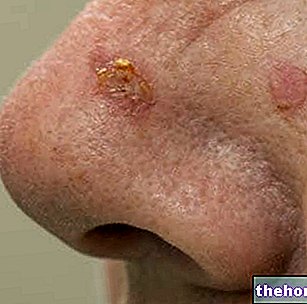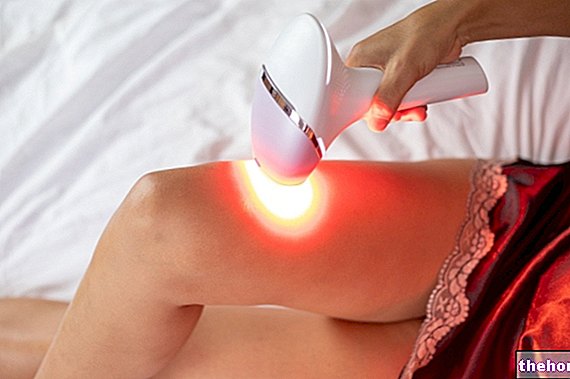Definition of mesotherapy
Mesotherapy is a technique that mainly consists in the elimination of the stagnation of liquids in the skin and subcutaneous tissues (water retention); it is therefore a very popular therapy to solve the imperfections of cellulite.
Mesotherapy has the primary objective of detoxifying the body from excess waste, eliminating liquids and, at the same time, toning and elasticising the skin.

Origin of the name
Mesotherapy comes from mesoderm, a term that represents the mid-deep layer of the dermis. Mesotherapy is defined as such because the injected substances can penetrate up to the mesoderm.
Administration of drugs
Mesotherapy consists of the intradermal injection of drugs, the same ones that, for the same clinical implications, would be administered to the patient systemically or orally. The injection is carried out using very thin needles, specially selected for mesotherapy: the needles, from 6 mm long, they allow to inject small quantities of pharmacological solution into the intradermal area.
Intradermal administration appears much more advantageous than systemic administration; in fact, while the latter requires the achievement of a minimum plasma concentration that guarantees the therapeutic effect, through mesotherapy the injection allows not only to reach the districts with a lower dose, but also to reduce the waiting time for so that the drug carries out its activity. Mesotherapy, therefore, does not require high drug concentrations, and its almost immediate action lasts for a few hours. The question arises, therefore, why mesotherapy is not used as a preferential method for administering drugs. The answer is simple: mesotherapy cannot be applied for every pathological form and cannot replace the systemic route, because it is practicable only in those pathologies that respond positively to intradermal (superficial) treatment.
Indications
Mesotherapy can be used as a remedial therapy for the following ailments:
- Cellulitis (edematous-fibrosclerotic panniculopathy)
- District adiposity
- Venous and lymphatic insufficiency
- Micro sports trauma
- Motor rehabilitation
- Osteopathies and arthropathies
- Dermatological affections
- Facial rejuvenation
For disorders affecting the internal organs, mesotherapy is not effective.
Mesotherapy treatment
The patient is treated with drugs diluted in physiological solution and injected into the intradermal area through single injectors (a single needle), or through multi-injectors that contain up to 18 needles. Obviously, before making the injection, the doctor must make sure that the patient is not allergic to the drug used, to avoid unpleasant adverse manifestations.
In general, with a single mesotherapy session, no significant improvements can be seen; usually, to obtain satisfactory results, the patient must undergo a minimum of 8-10 mesotherapy sessions.
Mesotherapy can be supported by complementary therapies such as lymphatic drainage, bandages, hydro massages, liposuction, thermal muds and lasers. The specialist can also advise the patient to take some plant extracts or drugs that can assist mesotherapy: for example, if the problem is cellulite, the subject can take substances that stimulate the microcirculation and act at the level of the vessels, increasing their resistance (e.g. gotu kola, rusco, horse chestnut)
Medicines used
The drugs most used in mesotherapy treatment, as mentioned, are the same that would be administered systemically: substances with analgesic, anti-inflammatory, anti-edema action (reduce swelling), revitalizing for skin rejuvenation (anti-aging), protective capillaries and lipolytics.
Mesotherapy does not involve pain, therefore patients are not anesthetized orally or intravenously; however, a small amount of anesthetizing solution is added to the injected drugs to avoid any possible painful manifestations.
Side effects
After the mesotherapy treatment, the skin may have wheals following the rupture of the vessel (caused by the needles), which disappear after a few hours. The needles used, although extremely thin, could cause bruising; in this regard, the use of the single needle for mesotherapy is preferable.
The injected drug tends to remain in the treated area for up to 12 hours, since its absorption appears relatively slow at the dermal level. However, the drug is unlikely to spread to nearby areas, as it tends to remain in the area. circumscribed. Precisely for this reason the side effects deriving from mesotherapy are very low and are far exceeded by the therapeutic ones.
Alternative to mesotherapy
Microtherapy is a recent technique that is used as an alternative to mesotherapy. The basic principles are the same, but the risk of rupture of small blood vessels is very low: in fact, while needles of 5 or 6 mm length are used for mesotherapy, in microtherapy, the needle barely exceeds one millimeter. substances, consequently, do not reach the mesoderm, but stop on the surface, barely exceeding the thickness of the epidermis.
However, microtherapy uses substances rich in mineral salts (hypertonic solutions), not drugs. To counteract the imperfections of cellulite, the substance is injected in situ causes a recall of liquids that goes from the hypodermic lipid tissue to the dermis (osmosis). This phenomenon can be enhanced if, to the solution, catalytic enzymes are added which favor the lysis of fat particles (lipolysis).
Microtherapy differs from mesotherapy for the absence of anesthetic: considering that the needle penetrates the skin only for a millimeter, it is not necessary to add anesthetic substances to the injectable solution since, by not touching capillaries and nerve endings, microtherapy does not cause discomfort or pain, as it happens in mesotherapy.
Mesotherapy: side effects and contraindications "




























